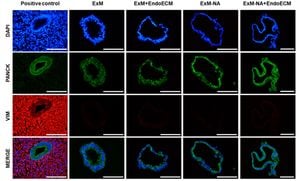Germany's political stage is witnessing dramatic shifts as the Alternative für Deutschland (AfD) has made sweeping gains during the 2025 federal elections, especially within its strongholds across East Germany. Electoral results published by state election offices have revealed astonishing support for the far-right party, sparking discussions about the implications for the future political climate of the nation.
Leading the charge, the AfD secured approximately 38.6% of the votes in Thüringen, establishing itself as the dominant political force within many local communities. Notably, the party received 73.3% of the votes from residents of the small village of Karlsdorf, which has only 117 inhabitants, and similarly drew 71.4% from Göschitz with 203 residents. Such results illuminate the deep-rooted support for the party, whose leadership, particularly by regional figure Björn Höcke, is often categorized as far-right and extreme by security agencies.
According to reports from BILD, approximately 10.3 million voters cast their ballots for the AfD during this election, which not only fortifies its presence across East Germany but also marks its increasing influence in West Germany. For the first time, the party achieved majorities in Gelsenkirchen and Kaiserslautern, both of which are traditionally dominated by the CDU and SPD. This shift indicates the AfD's growing appeal, even beyond its East German roots.
Analyzing the entire electoral map, one can observe the party's clear geographical divide. While most of West Germany retained its allegiance to traditional parties, vast swathes of East Germany turned to the AfD, highlighting stark regional contrasts. The voting patterns exhibited by communities such as Oberlausitz and the Erzgebirge—where the party garnered up to 65.6% of votes—further cement its role as the primary political alternative for many disaffected voters.
Voter demographics reveal intriguing insights: the AfD is particularly popular among the 30- to 44-year-old demographic, indicating its success in attracting younger voters disillusioned with mainstream parties. Reports state this demographic was instrumental, as the party capitalized on the political disenchantment felt by these voters, drawing them back to the polls, including over 1.8 million who had previously abstained.
The elections were exceptionally harsh for the coalition government, as the Social Democratic Party (SPD), the Greens, and the Free Democratic Party (FDP) suffered significant losses. The SPD found itself below the five percent threshold in over 113 localities, and alarmingly, there were communities such as Teichwitz where not one resident supported the Party. The Greens failed to secure any votes across 29 municipalities, underscoring the dramatic shift away from these parties.
Many communities marked by the AfD's rise have become emblematic of political discontent. The dominance of the party is particularly pronounced; for example, 150 of 596 municipal districts displayed over 50% support for the AfD, showcasing the colossal shift and the party's newfound legitimacy within the political arena.
Political analysts are sounding alarms about the AfD's ascension. Reports indicate potential instability as increased support for such right-wing ideologies could lead to polarized political discourse within the country and impact Germany's standing within the European Union. An extended policy focus may also create challenges for coalition-building as mainstream parties grapple with this growing challenge.
The vibrant discussions surrounding the auditing of electoral integrity also accompany the AfD’s windfall of votes. While the party has faced scrutiny and been designated by officials as extreme, its tactics appear to resonate with an increasingly large segment of the electorate, shedding light on the previously unacknowledged frustrations held by those living outside larger urban centers.
For the future, the AfD's influence may both disrupt traditional political alliances and challenge the status quo, guiding the discourse surrounding core issues such as national identity, migration, and economic policy. While regions like southern Thüringen and Sachsen saw overwhelming support for the party's candidates, the ramifications of their rise will be felt across the entirety of Germany.
Incumbent leaders and political strategists from all parties must now reckon with this shifting terrain. The results from this election may also prompt reflective conversations within the CDU and SPD about their platforms and outreach strategies, as appeals to traditional values alone no longer seem adequate to motivate voter engagement.
Overall, the 2025 federal elections will remain etched as pivotal within Germany’s contemporary political narrative. The electorate’s pronounced realignment reflects broader societal trends and potentially portends more transformative shifts as the nation grapples with its future direction.



